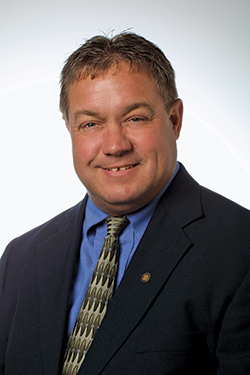Elements of Sustainability

When the County Board adopts its annual strategic plan agenda, we always have the future of Peoria County in mind. Never has this been more evident than during this year's planning session, however. New short-term goals were adopted, each including elements of sustainability that allow us to conserve energy and natural resources, improve the resiliency and health of our environment, and save money in the long run.
GOAL 1: Safe and Healthy Community. One objective of this goal is excellent health and human services for all residents. Included in this year's agenda are lead abatement, recycling initiatives, storm water management and erosion control. Efforts to mitigate recurring flood damage, collect expired or unused medications, and remove discarded or unwanted tires are already in progress.
GOAL 2: Growing County. Objectives of this goal include working toward a clean, sustainable Illinois River and preserving prime agricultural farmland. Included in this year's agenda are considerations for a local biodiesel plant and adoption of the comprehensive land use plan. Development of a storm water detention and illicit discharge ordinance is also underway.
GOAL 3: High-Performing Public Organization. One objective of this goal is practicing sustainable concepts and principles throughout the organization. Included in this year's agenda are energy savings initiatives and sustainability planning. Computer system upgrades and business continuity planning are already in progress.
GOAL 4: World-Class Public Facilities. Objectives of this goal include improving county infrastructure and well-built and well-maintained facilities that utilize sustainable concepts and principles, such as Bel-Wood Nursing Home and the Peoria Riverfront Museum. Indeed, these two projects, both desirous of LEED certification, are already in progress.
Peoria County prefers to lead by example. We have undertaken many projects to conserve energy and preserve our environment, while at the same time reducing expenses and, subsequently, the taxpayer's burden. Capital improvements to our facilities include the use of recycled materials, recyclable products and high-efficiency lighting. Energy-efficient cooling systems have been installed at the courthouse, health department and jail, resulting in reduced consumption and increased savings.
Infrastructure improvements include the installation of LED traffic signal lights and the use of recycled materials to strengthen and prolong the life of existing roadways. During snow events, beet juice is utilized as a pre-treatment to reduce waste and increase efficacy of salt. And the county added ten flex-fuel vehicles to its fleet this year, bringing the total of flex-fueled vehicles to 40. We also purchased four hybrid vehicles and will be adding 12 more by 2012. These vehicles replace older, less fuel-efficient models in the fleet.
Peoria County must balance existing societal, economic and ecological needs of the community without compromising those same needs for future generations. In accordance with the strategic plan, consideration for conservation and preservation is given for all initiatives the county assumes. If an action is deemed destructive to our inherent future, it is not undertaken. This is how we sustain. iBi

